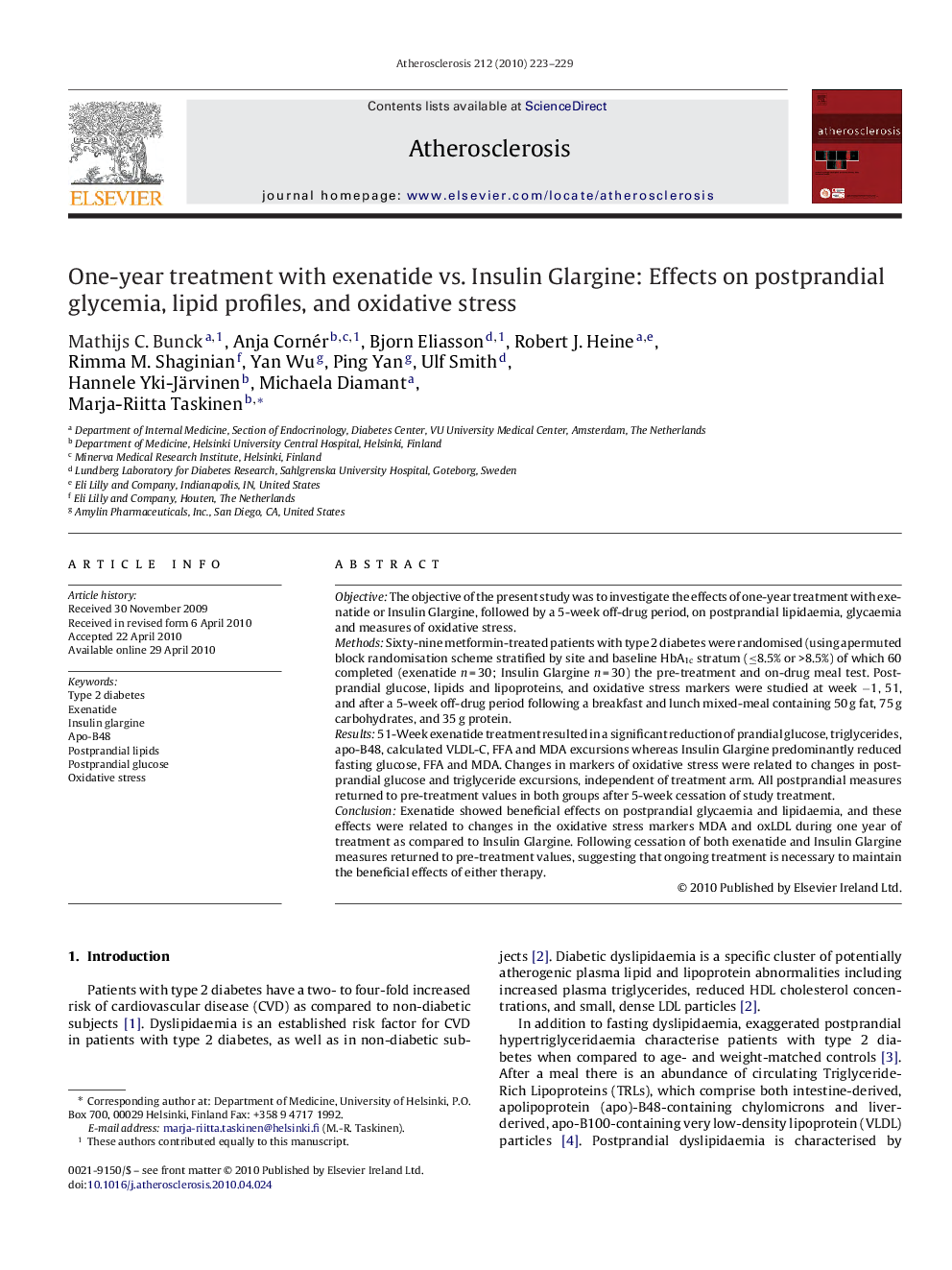| کد مقاله | کد نشریه | سال انتشار | مقاله انگلیسی | نسخه تمام متن |
|---|---|---|---|---|
| 2892853 | 1172391 | 2010 | 7 صفحه PDF | دانلود رایگان |

ObjectiveThe objective of the present study was to investigate the effects of one-year treatment with exenatide or Insulin Glargine, followed by a 5-week off-drug period, on postprandial lipidaemia, glycaemia and measures of oxidative stress.MethodsSixty-nine metformin-treated patients with type 2 diabetes were randomised (using apermuted block randomisation scheme stratified by site and baseline HbA1c stratum (≤8.5% or >8.5%) of which 60 completed (exenatide n = 30; Insulin Glargine n = 30) the pre-treatment and on-drug meal test. Postprandial glucose, lipids and lipoproteins, and oxidative stress markers were studied at week −1, 51, and after a 5-week off-drug period following a breakfast and lunch mixed-meal containing 50 g fat, 75 g carbohydrates, and 35 g protein.Results51-Week exenatide treatment resulted in a significant reduction of prandial glucose, triglycerides, apo-B48, calculated VLDL-C, FFA and MDA excursions whereas Insulin Glargine predominantly reduced fasting glucose, FFA and MDA. Changes in markers of oxidative stress were related to changes in postprandial glucose and triglyceride excursions, independent of treatment arm. All postprandial measures returned to pre-treatment values in both groups after 5-week cessation of study treatment.ConclusionExenatide showed beneficial effects on postprandial glycaemia and lipidaemia, and these effects were related to changes in the oxidative stress markers MDA and oxLDL during one year of treatment as compared to Insulin Glargine. Following cessation of both exenatide and Insulin Glargine measures returned to pre-treatment values, suggesting that ongoing treatment is necessary to maintain the beneficial effects of either therapy.
Journal: Atherosclerosis - Volume 212, Issue 1, September 2010, Pages 223–229